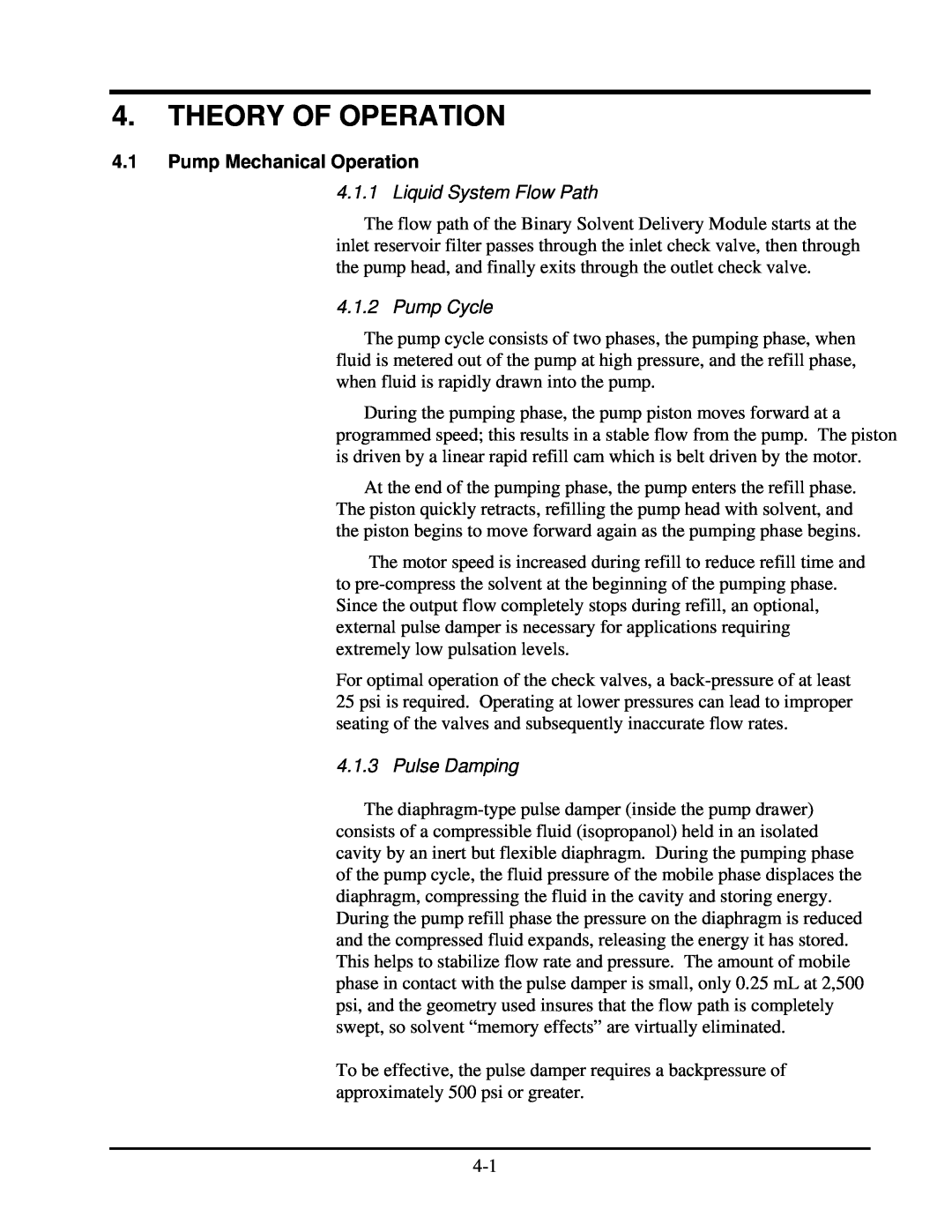
4.THEORY OF OPERATION
4.1Pump Mechanical Operation
4.1.1Liquid System Flow Path
The flow path of the Binary Solvent Delivery Module starts at the inlet reservoir filter passes through the inlet check valve, then through the pump head, and finally exits through the outlet check valve.
4.1.2 Pump Cycle
The pump cycle consists of two phases, the pumping phase, when fluid is metered out of the pump at high pressure, and the refill phase, when fluid is rapidly drawn into the pump.
During the pumping phase, the pump piston moves forward at a programmed speed; this results in a stable flow from the pump. The piston is driven by a linear rapid refill cam which is belt driven by the motor.
At the end of the pumping phase, the pump enters the refill phase. The piston quickly retracts, refilling the pump head with solvent, and the piston begins to move forward again as the pumping phase begins.
The motor speed is increased during refill to reduce refill time and to
For optimal operation of the check valves, a
25 psi is required. Operating at lower pressures can lead to improper seating of the valves and subsequently inaccurate flow rates.
4.1.3 Pulse Damping
The
To be effective, the pulse damper requires a backpressure of approximately 500 psi or greater.
